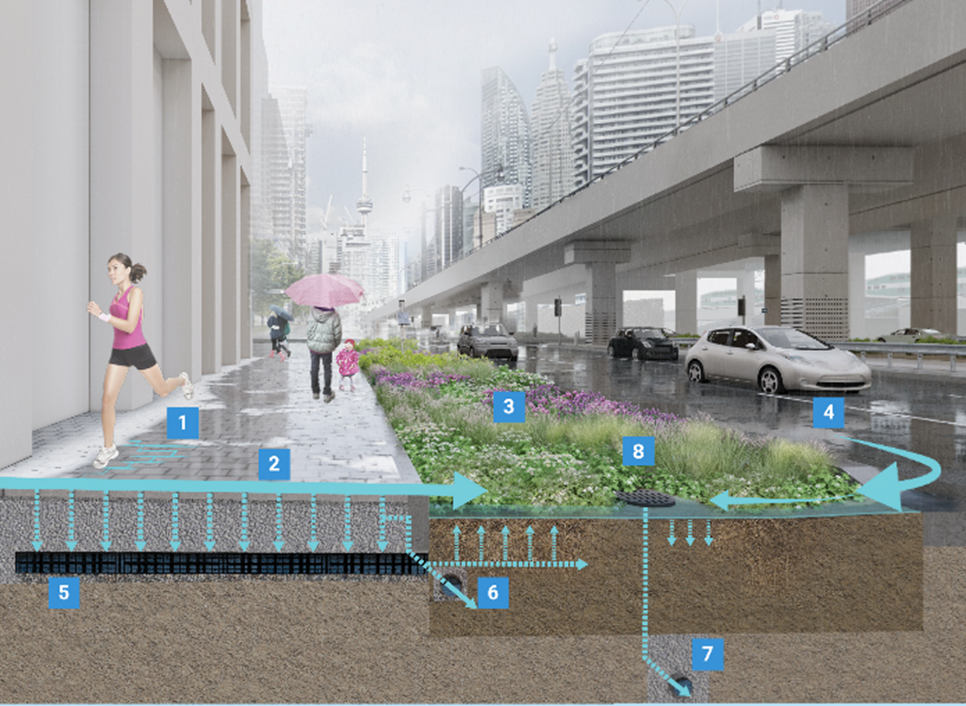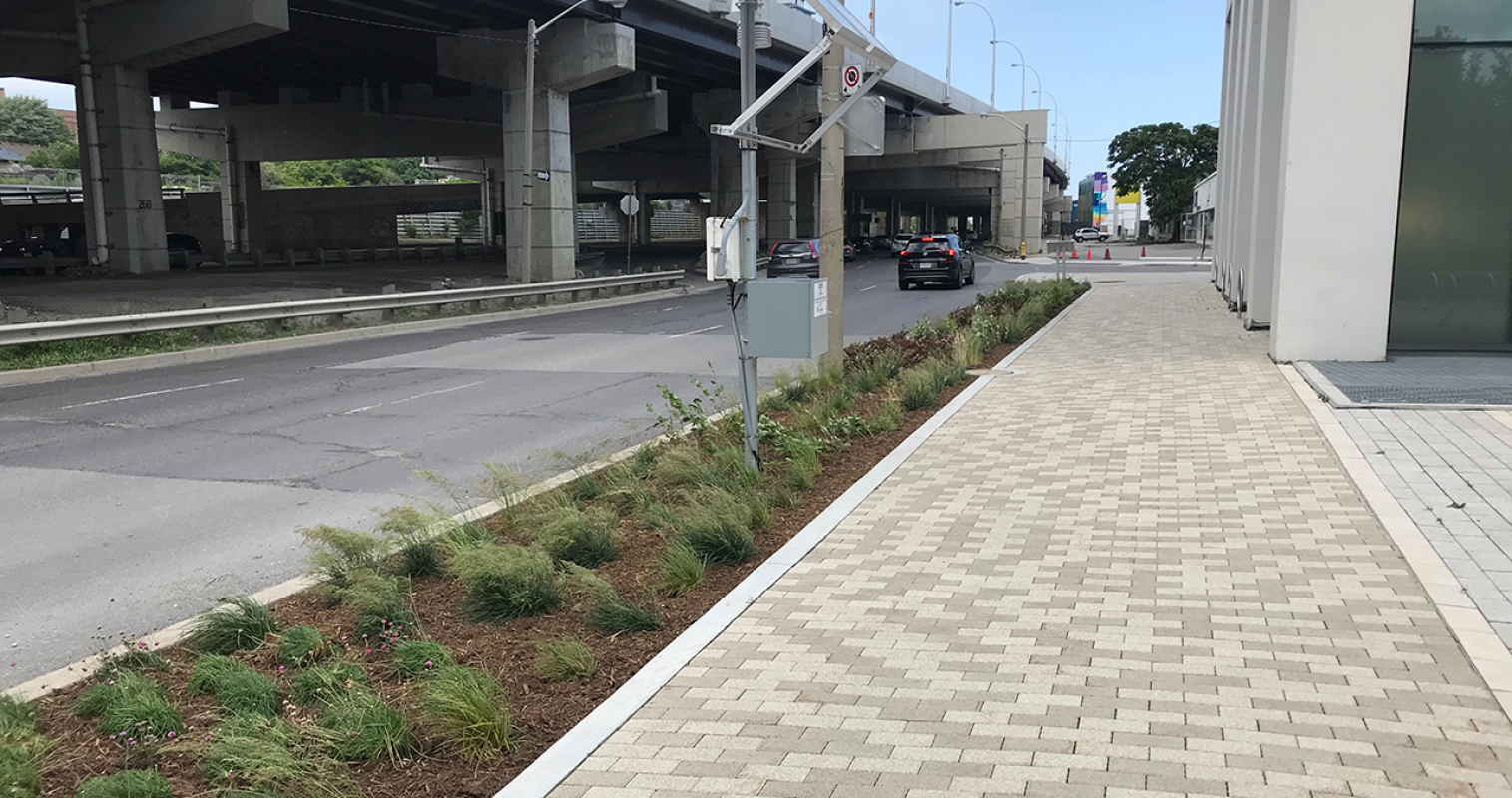Little Pilot Project: Big Impact
This little stretch of sidewalk is testing a suite of features and materials that will help us to build greener streets.
By: Sonja Vangjeli
Waterfront Toronto is testing more sustainable materials and bioretention planting through the Lake Shore Boulevard East Sidewalk Pilot Project. The results will help design the new Lake Shore Boulevard East and inform new city-wide Green Street Standards.
The Pilot Project, which involves a section of sidewalk along the south side of Lake Shore Boulevard from Sherbourne Common to 12 Bonnycastle Street, is one of ten proposed Quick Start projects as part of the Lake Shore Boulevard East Public Realm Vision, Phasing and Implementation Plan.
Greener Streets, Greener City
Stormwater runoff is a challenge for cities. In areas that are heavily paved, stormwater runs off hard surfaces such as concrete and asphalt, overwhelming storm drains and flowing directly into waterways. Pollutants in the stormwater, like road salt, are damaging to the environment if they are discharged directly into waterways, eventually leading to Lake Ontario.
Managing and treating stormwater – created by rain and melting snow – is critical to preventing flooding and improving water quality.

A pilot project on Lake Shore aims to improve stormwater management and make street plantings more sustainable by keeping more rain on site. The rain is used to water plants and is filtered through the soil, instead of sending it directly to storm sewers. See what the numbers in this image mean below.
What is different about this sidewalk?
All the elements of the design work together to create a greener street:
- Porous pavers instead of concrete allow water to flow through the sidewalk instead of over it.
- The sidewalk has a 2% slope towards the planting bed which helps direct water into the planting bed.
- Salt and shade tolerant plant species are selected to be resilient to the tough urban location, and make the corridor feel more green. They also create more separation between pedestrians and motorists.
- Stormwater absorbed by planting bed gets used by the plants instead of collecting in storm drains.
- Stormwater storage under the sidewalk allows for passive irrigation during drier periods.
- A pipe distributes stored water to planting area, as part of the passive irrigation system.
- Another pipe drains excess water off site so the plants don’t drown in times with heavy rain.
- Drain basin helps monitor stormwater flows and quality to determine how the system is performing. This data can help inform adaptive management and standards for other projects.
Evaluating Performance
The pilot will be monitored by the Sustainable Technologies Evaluation Program (STEP) to evaluate how well these materials improve the sustainability of street plantings and management of stormwater, as well as their durability and maintenance requirements.
The results of this pilot project will inform the detailed design of the full scope of Lake Shore Boulevard East. The monitoring findings will also inform the City of Toronto’s Green Streets program, contributing to the development of design standards, as well as operations and maintenance practices to facilitate broader implementation of Green Streets projects.
What do you think? Email us, tweet at us or join the conversation by following us on Facebook and Instagram.




